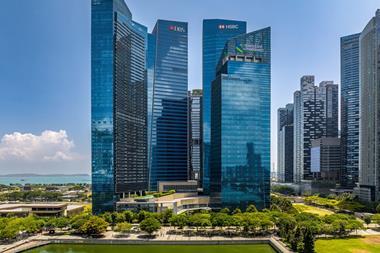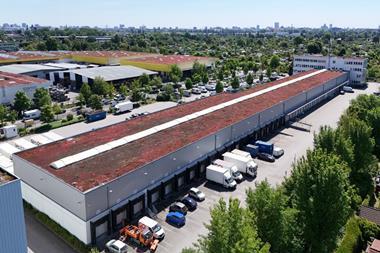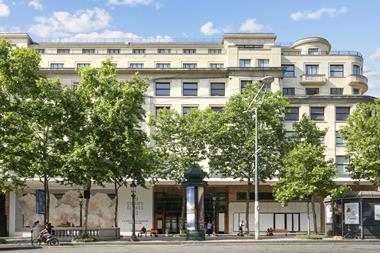The recent shift in retail real estate pricing presents an opportunity to invest in undervalued assets and achieve stable returns, writes Eric Decouvelaere
European value-add retail is in the midst of a renaissance after almost two decades of transition. The accumulative impacts of e-commerce trends, pandemic lockdowns and changing consumer spending habits, including the shift towards buying services over goods, have forced the retail sector to reinvent itself.
In the sector’s most turbulent years, asset performance struggled as rents fell precipitously while other traditional asset classes, notably logistics and residential, continued to see rental growth.

The retail sector’s brands and landlords had to learn to adapt and survive amid a confluence of technological, environmental and societal secular shifts, with similar disruption currently under way in office markets.
However, the retail industry has emerged through the other side into a highly-polarised sector. Retail real estate is now in a rebased pricing environment, offering opportunities to create value and generate risk-adjusted income returns. In other words, it is retail’s time to shine again.
What makes a retail winner?
While prime retail asset owners have adapted to new retail trends, many owners still have not adapted their assets to today’s retail business environment and continue to struggle under the weight of high vacancies with suboptimal omnichannel integration. They often simply lack the capital, expertise or the innovation know-how required for the transformation. The winners of the retail renaissance have come together around three key pillars:
1. Location: being close to customers and easy to reach with great transport links.
2. Proposition: an attractive mixed-use offering with F&B and leisure as well as retail driving footfall, with retailers having an integrated omnichannel retail business model that appeals specifically to the local population
3. Execution: the strategy delivered by leading retail real estate experts in collaboration with brands, landlords, investors, lenders and the communities in which successful shopping destinations can operate and thrive. The alignment of these three interrelated variables lays the foundations for a best-in-class retail destination that can create value, foster communities and drive rental growth in support of long-term risk-adjusted investment performance.
Omnichannel distribution models are key
Since the pandemic, the retail industry has optimised how omnichannel retailer distribution channels operate. In our European retail portfolio, we have observed that in markets or regions where major brands have stores, they also sell more online. The stores serve their brand and the brand serves their stores.
Simply put, consumers can either find what they are searching for in the store or order the product online in the store. In addition, many brands have started to charge for returns, with fees waived for those who return items to their store, which helps drive footfall to stores.
Successful retail offerings are increasingly organised to meet consumer demand across an integrated omnichannel distribution model which can be expressed in a simple matrix:
· Browse online, shop in-store
· Browse online, shop online
· Browse in-store, shop in-store
· Browse in-store, shop online.
Defining retailers by footprint strategy
A brand’s store footprint size and number of stores are the two key drivers of rental growth and indicate future growth ambitions. Ultimately, the retail industry has polarised into four types of retailers:
1. Retailers that want more stores with more footprint (ie bigger stores), to aggressively expand market capture.
2. Retailers that want fewer stores with more footprint, for brands that want to consolidate into flagship and jumbo stores, display their inventory in a physical location and reduce catchment area overlap.
3. Retailers that want more stores with less footprint, for retailers that rely less on online sales. This is popular with budget clothing retailers selling inexpensive products that do not want to assume delivery and return costs. Electronic brands are another example that previously preferred larger stores with outlets dovetailing as hybrid inventory storage hubs. However, electronic brands have pivoted to occupying smaller retail space as it is cheaper to store in out-of-town logistics assets and utilise retail stores as showrooms, and facilities for returns and collection.
4. Retailers that want fewer stores with less footprint. These tend to be distressed or legacy retail brands that have inadequately adapted to changing consumer trends, e-commerce, and the integrated omnichannel distribution model.
Opportunity is now
These dynamics represent a bifurcated retail sector and are present across Europe. Even as the broader economy likely weakens in early 2024, we anticipate assets with best-in-class retailers that have adaptive and integrated omnichannel distribution models will remain resilient through a potential period of lower consumer spending as they align those three pillars – location, proposition and execution. Prime retail today is a battle-tested real estate sector.
Having endured two decades of disruption, the industry’s renaissance will be a long time coming and well-earned. Since the pandemic, valuations and rents have rebased. We see a considerable pipeline of opportunities for retail assets offering investors pockets of value throughout Europe. As investors start to return to the sector, we anticipate many legacy asset owners will capitalise on the returning liquidity and sell.
Elsewhere, some opportunities will arise as loans mature or through failure to refinance. We believe that the coming quarters will offer opportunities for global platforms to acquire assets at attractive entry prices aligned to the three pillars of location, proposition and execution which will provide rental growth.


















